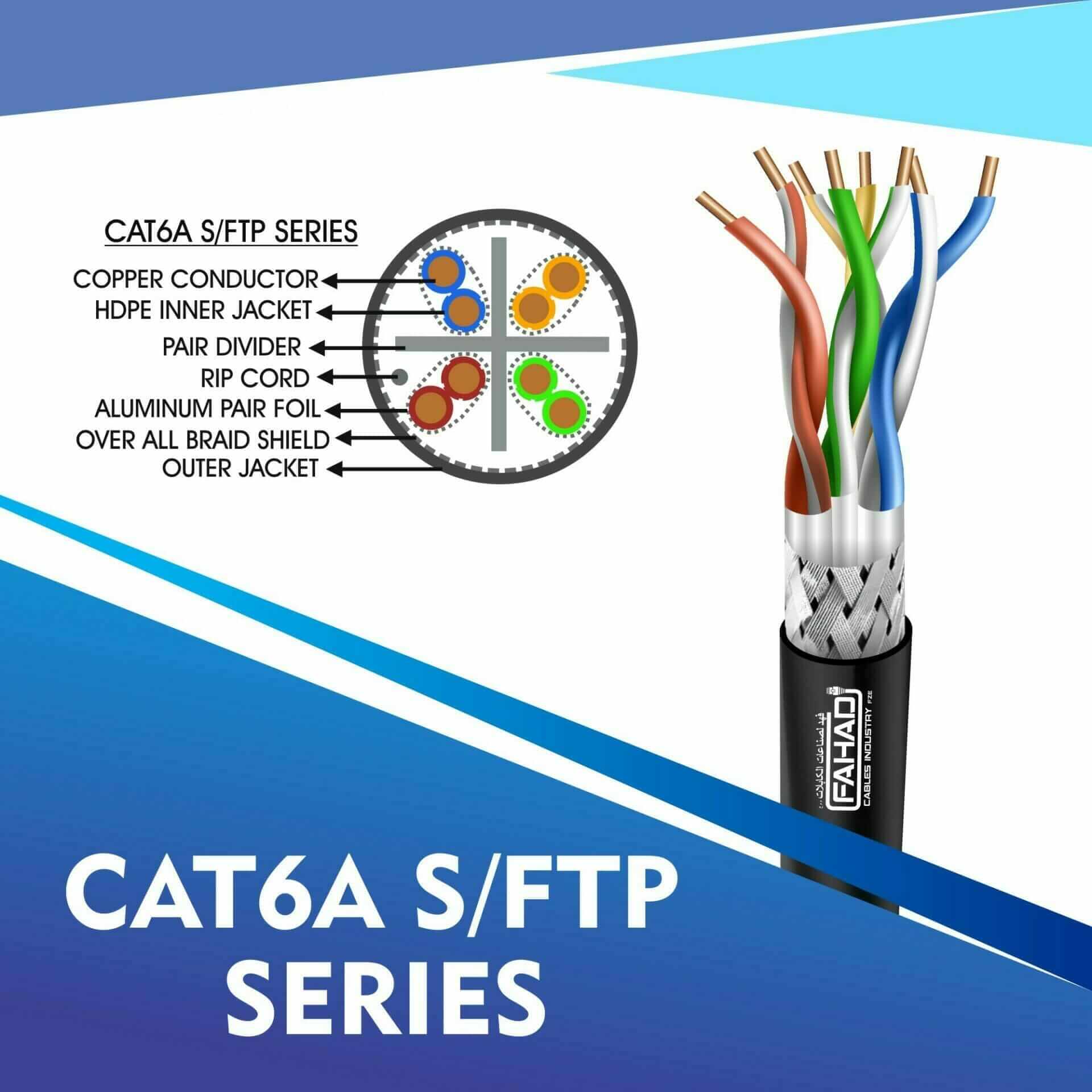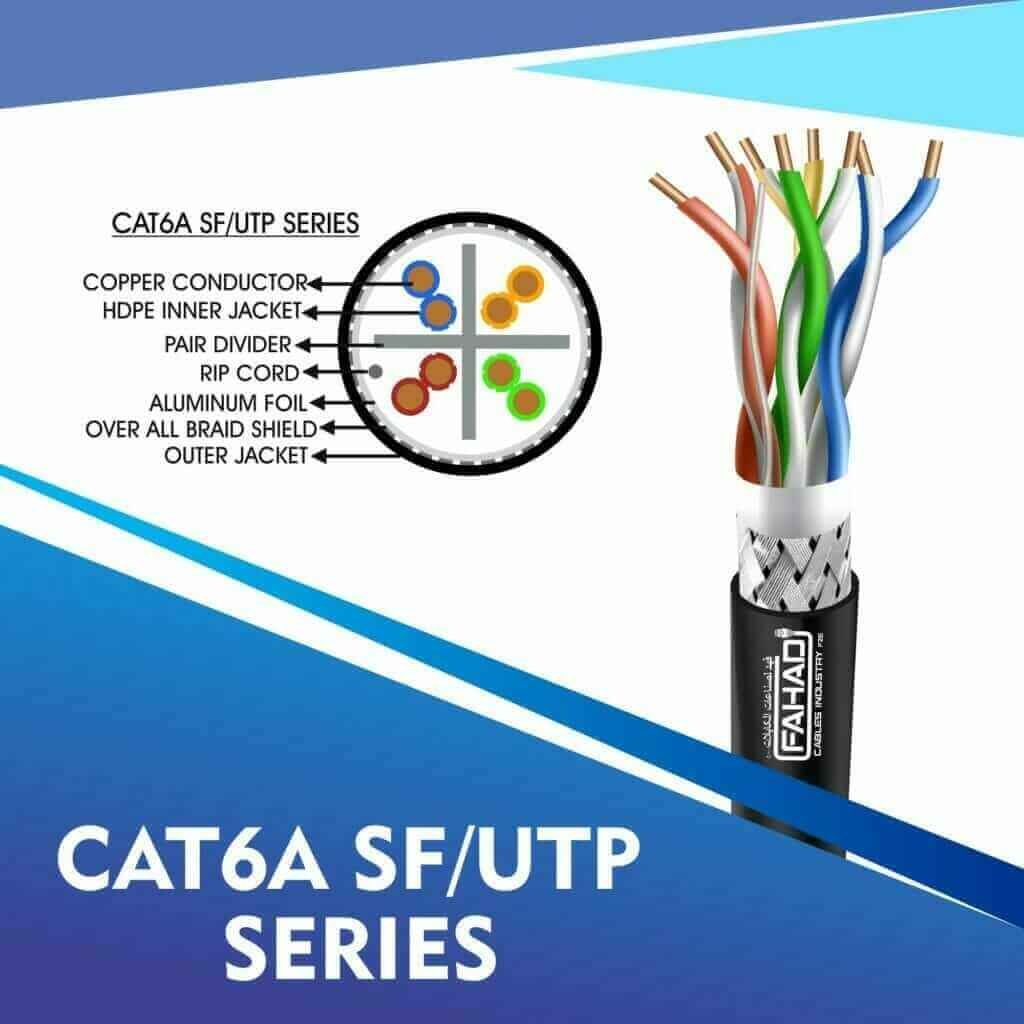- Network Cables
- Control automation Cables
- Data Patch Cord
- fiber optic cable
- Fiber Patch cord Multimode
- Fiber Patch cord Single Mode
- Fiber Pigtails Series
- Coaxial Cables
- security cable wire
- alarm cable
- speaker cables
Understanding Ethernet Cables: What Do Different Colors Mean?

Introduction to Ethernet Cables
Ethernet cables play a crucial role in establishing reliable wired connections in various networking environments. Primarily utilized for connecting devices such as computers, routers, and switches, these cables ensure efficient data transfer across local area networks (LANs). The significance of Ethernet cables extends to home networking, office setups, and large-scale data centers, where they facilitate uninterrupted communication between devices.
In home networking, Ethernet cables provide a stable internet connection, enabling smooth streaming of high-definition content, online gaming, and seamless browsing. Unlike wireless connections, which can be subject to interference from various physical obstructions, wired Ethernet connections offer consistent speed and reduced latency. This reliability makes them a preferred choice for households that demand high performance from their internet services.



In office setups, Ethernet cables are equally important, creating secure and efficient networks that enhance productivity. Businesses rely on fast and reliable connections to manage operations, share resources, and communicate effectively. Ethernet cables not only ensure a faster transfer of data but also provide enhanced security, an essential factor for protecting sensitive information within corporate environments.
Data centers, which house vast amounts of servers and storage devices, heavily depend on Ethernet cables for interconnectivity. The efficiency and performance of these facilities are paramount, as they support cloud computing, data processing, and application hosting services. For this reason, understanding the different types of Ethernet cables and their specific use cases, indicated through color coding and specifications, is essential for network administrators and users alike.
The various colors of Ethernet cables often denote differences in their capabilities and intended uses. Recognizing these distinctions aids in selecting the appropriate cables that meet specific networking requirements. This foundational knowledge about Ethernet cables equips individuals and organizations to build strong, reliable networks, ensuring optimal performance in their technological endeavors.
The Basics of Ethernet Cable Colors
Ethernet cables play a crucial role in establishing reliable connections within networked environments. The variety of colors seen among these cables can be quite intriguing, especially for those new to networking. It’s important to understand that the colors of Ethernet cables are not strictly standardized and often vary based on manufacturer practices or specific use cases. While some users might believe that certain colors indicate particular functions, this is not a universal rule.
Ethernet cable color coding has become an informal convention that helps in cable management and troubleshooting. For instance, a common practice is to assign different colors to cables based on their respective purposes. A blue Ethernet cable is frequently used for standard networking tasks, while yellow or orange cables may denote connections regarding voice over IP (VoIP) communications or Power over Ethernet (PoE). This visual differentiation aids technicians in quickly identifying cable functions, reducing the potential for confusion during installation and maintenance.
Moreover, businesses often adopt these color schemes to better manage their cabling infrastructure, ensuring that various types of connections are organized and easily accessible. While manufacturers may follow their unique coding methods, the underlying principles of color differentiation remain similar across the board. Therefore, understanding these color variations not only makes cable management more efficient but also enhances troubleshooting capabilities by enabling quicker identification of specific cable types within complex networking environments.
In conclusion, recognizing the significance and reasoning behind Ethernet cable colors can significantly contribute to effective network management. By clarifying the distinct uses and practices associated with various colors, individuals can optimize their networking setups both for ease of use and reliability.
Common Colors and Their Meanings
Ethernet cables come in various colors, each with specific conventions and applications that can help in organizing and identifying network setups. Understanding the significance of these colors is essential for both home networking and professional environments.
One of the most prevalent colors for Ethernet cables is blue. Generally, blue cables are associated with standard network connections, often used to connect devices such as computers to routers or switches. Their distinct color makes it easy to identify the primary network lines, which is crucial for troubleshooting connectivity issues.
Yellow Ethernet cables are commonly used for special applications like Power over Ethernet (PoE) installations. In many networking setups, yellow cables may signify a connection that supplies power along with data. This dual functionality makes them particularly useful in environments where devices like IP cameras or VoIP phones are deployed.
Gray Ethernet cables serve as a versatile option, often found in both residential and commercial networks. They are frequently used for general-purpose connectivity, offering a neutral tone that can blend in with most setups without causing visual clutter. This makes gray cables ideal for internal wiring within walls or ceilings, where aesthetics may not be a concern.
Black cables are typically utilized in more technical installations or server rooms. These cables are often seen in environments where organizational needs necessitate a more discreet appearance. Black Ethernet cables can be commonly associated with high-performance or specialized network tasks, making them suitable for data centers or structured cabling systems.
Other colors like green, orange, and red may represent specific functions, such as connections to security systems, backup servers, or Ethernet crossovers. While these usages can vary between organizations, understanding the general trends associated with cable colors can greatly enhance both the functionality and manageability of a networking environment.
Ethernet Cable Types: Categorization by Color
Ethernet cables serve as the backbone of modern networking, connecting devices ranging from computers to printers. These cables are categorized into various types, with color playing a crucial role in easy identification and differentiation. The most common categories include Cat5e, Cat6, and Cat6a, each represented typically by specific colors, which aids consumers in selecting the appropriate cable for their needs.
Cat5e, often recognized by its gray sheathing, supports data rates of up to 1 Gbps and is a prevalent choice for home networking. This category prioritizes performance in environments with reduced crosstalk, making it suitable for basic internet activities. The color gray is not standardized, but it has become widely accepted to represent this particular type.
Moving to Cat6 cables, these are frequently associated with a solid blue or dark blue exterior. Cat6 enhances bandwidth capabilities, supporting data transmission speeds of up to 10 Gbps and a larger frequency range. The distinct color helps users quickly identify its superior specifications compared to Cat5e, making it a favored selection for more demanding network systems.
Cat6a cables, which might be represented by a dark green or black hue, expand upon the features of Cat6, providing improved performance in longer distances with a capability of maintaining 10 Gbps speeds up to 100 meters. The identification by color aligns with its advanced features, guiding buyers when setting up high-speed networks in both residential and commercial settings.
In addition to these primary categories, one may also encounter specialty Ethernet cables, such as Cat7 and Cat8, which are often marked by additional colors like purple or gray-black. Collectively, understanding the color-coding associated with Ethernet cable types can play a significant role in making informed choices, ultimately enhancing networking efficiency.
The Role of Cable Length and Color Coding
The performance of Ethernet cables is significantly influenced by their length, as longer cables can lead to decreased signal quality and slower data transmission rates. The general rule of thumb is that Ethernet cables should not exceed 100 meters (approximately 328 feet) in length to maintain optimal performance. Beyond this threshold, the potential for signal degradation increases, which may result in slower internet speeds and connectivity issues. To mitigate these problems, professionals often employ various strategies, including using higher quality cables or minimizing the length wherever possible.
In conjunction with performance concerns, color coding plays a crucial role in effectively managing cable lengths within extensive network setups. Different colored Ethernet cables are often used to signify various lengths, making it easier for technicians and network administrators to recognize and sort them according to their specific application needs. For instance, a short cable might be coded blue, while longer counterparts may be represented by yellow or red. This color coding system not only improves organizational efficiency but also enhances troubleshooting processes, as it allows for quicker identification of the appropriate cable based on color alone.
Furthermore, color coding can assist in distinguishing between cable types within an installation. For example, Cat5, Cat5e, Cat6, and higher-grade cables can use different colors to indicate their specifications, helping ensure that installers select the correct cable for the intended purpose. While setup may vary among different organizations, adhering to a color coding system is instrumental in maintaining an orderly network environment. Overall, the combination of maintaining optimal cable lengths and implementing color coding enhances both the reliability and efficiency of network installations.
Best Practices for Using Colored Ethernet Cables
Utilizing colored Ethernet cables can significantly improve organization and efficiency within your networking environment. Implementing a structured color coding system is beneficial for both new installations and existing setups, ultimately streamlining processes such as troubleshooting and maintenance. Adopting best practices for managing these cables enhances operational effectiveness and reduces downtime.
First and foremost, create a clear and concise color coding scheme based on the specific roles or functions of each cable. For instance, you might assign a unique color to cables that serve different departments or purposes—such as blue for general network connections, orange for voice over IP (VoIP), and green for internet access. This color distinction allows for quick visual identification, minimization of errors, and ease of management, which is paramount in large networks.
Next, ensure proper labeling of both ends of the Ethernet cables. While color coding provides quick identification, labels are essential for clarity, especially during maintenance or troubleshooting procedures. Use durable labels that can withstand environmental factors and won’t easily rub off over time, enhancing your ability to locate specific cables quickly.
Additionally, maintain an organized cabling system by employing cable ties or management racks. This practice helps prevent tangling and potential damage to the cables, which can lead to connectivity issues. Regularly check for wear and tear, replacing any damaged cables promptly to maintain network performance.
Incorporating these best practices can markedly decrease confusion and enhance your networking operations. By systematically managing colored Ethernet cables, you not only simplify the troubleshooting process but also ensure that your overall network remains organized, efficient, and adaptable to future expansions or modifications.
Troubleshooting Common Issues with Ethernet Cables
Ethernet cables are essential for establishing a reliable network connection, but they can encounter various issues that affect their performance. Understanding the colors used in Ethernet cables can play a significant role in diagnosing and resolving these common problems. For instance, cable colors often indicate the quality of the connection and help identify if a specific cable is intended for particular use cases.
One prevalent issue is signal degradation, which may lead to slow internet speeds or intermittent connectivity. If you notice that a specific color-coded Ethernet cable is consistently causing problems, it may indicate that the cable type is not suitable for your network requirements. For example, a cable marked with an orange color usually signifies a standard data cable, while a blue cable might indicate a higher performance category. An inappropriate cable can lead to inefficiencies in data transfer and overall network performance.
Another common problem arises from physical damage to the cable. Ethernet cables often come in various colors, which can help users identify cables that have been improperly handled or are outdated. A frayed or damaged cable, regardless of color, will typically need to be replaced to restore proper connectivity. By observing the condition of the cables, users can make quicker decisions regarding repairs or replacements.
Additionally, users may encounter connectivity issues from incorrect wiring configurations. The color codes for wiring in Ethernet cables typically follow T568A or T568B standards. Familiarity with these standards can help troubleshoot connectivity problems. If the colors on the cable do not match the standard wiring configuration, this mismatch could lead to a complete failure of communication between devices.
Through an understanding of Ethernet cable color usage and associated issues, users can effectively troubleshoot connectivity problems, ensuring a smoother and more reliable experience within their network setups.
Future Trends in Ethernet Cable Color Coding
The evolution of networking technology has led to significant changes in the way Ethernet cables are designed and utilized. As we look to the future, it is expected that advancements in both technology and organizational practices will influence the ongoing development of Ethernet cable color coding. The primary goal remains to enhance the efficiency and ease of network management, particularly as demands for higher speeds and greater bandwidth continue to rise.
One of the notable trends is the potential for standardized color coding across the industry. As networking needs become more complex with the rise of cloud computing, IoT (Internet of Things), and smart devices, the requirement for efficient organization grows more critical. Future advancements may encourage manufacturers and industry entities to establish agreed-upon color codes, which would simplify network configurations and reduce errors during installation and maintenance.
Moreover, the introduction of smart technologies within networking systems could further influence color coding practices. For example, Ethernet cables could be equipped with sensors that provide real-time data about their status and performance, thereby necessitating a distinct color-coded system that clearly indicates various operational statuses. This could help technicians quickly identify issues and optimize performance, ultimately improving network reliability.
Additionally, as fiber optic technology continues to gain traction, color coding may evolve to account for different types of cables used in conjunction with Ethernet. Users will need to adapt to these changes and be prepared for new standards as the networking landscape shifts towards greater efficiency and integration of diverse technologies.
Overall, the future of Ethernet cable color coding appears promising, characterized by technological advancements and an increasing focus on streamlined organization. Stakeholders can expect that these changes will shape how networks are established and maintained, thus enhancing overall functionality.
Conclusion and Key Takeaways
In the realm of networking, understanding the significance of Ethernet cable colors plays a crucial role in enhancing connectivity and operational efficiency. Different colors are not merely aesthetic choices; they convey important information related to the type of cable, its intended use, and its performance capabilities. Grasping these color conventions enables users to make informed decisions when setting up or troubleshooting network connections, ensuring that they choose the right cable for their specific needs.
One of the primary takeaways from this discussion is the differentiation of cable types based on color coding. For instance, blue cables are commonly associated with standard, straight-through connections, while orange cables are often used for crossover applications. Recognizing these color distinctions helps users quickly identify cables and their functions, thereby streamlining network setup and maintenance. Furthermore, understanding colors can minimize troubleshooting time, as users can easily identify potential issues based on the cables in use.
Another essential aspect emphasized in this blog is the importance of consistent color use across both professional and personal environments. By adopting established color standards, network administrators and users can facilitate better communication and understanding among team members, as well as optimize network performance. This consistency can ultimately lead to improved productivity and a more robust networking infrastructure.
As we have explored throughout this blog post, knowledge of Ethernet cable colors is not just about aesthetics; it is about operational efficiency. Whether in a home office or a larger corporate setting, recognizing these color conventions empowers users to better manage their network environments. By taking the time to understand what each color signifies, users can troubleshoot connectivity issues more effectively and ensure that their networks operate at peak performance.



